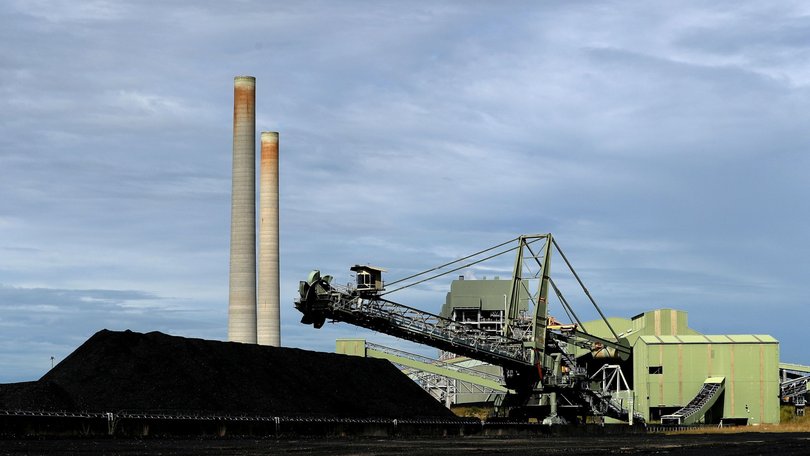How Australia’s renewable energy rollout will keep power costs elevated for years to come

Labor likes to go on and on about how renewables are the cheapest form of energy.
It’s a pity Australians aren’t seeing it in their power bills, with average quarterly electricity charges of $500 hardly unusual now for families. That’s even with the Federal Government’s taxpayer-funded $75 quarterly rebates that run until the end of this year.
When the Liberal Party this week joined their junior Coalition partner the Nationals in dumping the net zero by 2050 target, Prime Minister Anthony Albanese declined to say when power bills would fall under Labor, given the 33.9 per cent increase in the year to September 30.
Sign up to The Nightly's newsletters.
Get the first look at the digital newspaper, curated daily stories and breaking headlines delivered to your inbox.
By continuing you agree to our Terms and Privacy Policy.Instead, he trotted out the usual political spin.
“What we know is that the investment in renewables is the cheapest form of new energy. We know that that’s the case. Business says that that’s the case,” he told reporters.
An energy economist who advised the Federal Government on renewable energy has told The Nightly it would be at least 15 years before Australians benefited from cheaper power bills.
The pain would continue because transmission costs, generated by the need to connect this renewable energy, made up a higher proportion of the dreaded bill in coming decades.
“This is going to run through the system for a long, long time for probably 15 years,” he said.
“Fifteen years of that capital cost being amortised into the system.
“Unless there’s some sort of miracle, I can’t see how you can get power bills down with the current configuration and the current spend that we’ve got to have to replace all of those old assets.”

The closure of coal-fired power stations means new transmission lines — which take generated electricity from power stations to individual towns and cities — are being built to feed solar and wind energy into the grid.
Labor first went to the 2022 election with a plan to spend $20 billion on its Rewiring the Nation program — a key plank of their first Budget in office.
The Albanese Government was re-elected resoundingly in May partly after voters rejected the Coalition’s plan for seven nuclear power plants, which would replace coal-fired power stations and keep existing transmission lines.
As a result, taxpayers and consumers will now ultimately foot a more expensive bill for the capital costs of installing new renewable energy transmission lines as part of Labor’s green energy transition.
“The transmission costs are definitely not coming down because we’re building a lot more transmission to get these remote wind and solar sites into the system,” the economist said. “That’s happening at the same time as you’ve got a hell of a lot of rooftop solar feeding into the system in the middle of the day.”
Building those transmission lines to distribute that renewable energy is a fraught task, with the issue dividing rural landowners, and potentially slowing down progress.
Before the Federal election, the Australian Energy Regulator estimated the cost of transmission made up just seven per cent of the overall cost of retail electricity bills.
The costs, as an overall proportion of quarterly electricity bills, may even rise in order to finance the building of new transmission lines.
It’s true that wholesale electricity costs have been coming down, as more renewable energy has been fed into the grid.
Wholesale electricity prices averaged $87 a megawatt hour in the September quarter, marking a 27 per cent annual fall, Australian Energy Market Operator data showed.
These wholesale prices make up about a third of the overall cost of quarterly power bills paid by consumers.
Another third of that bill is through the distribution costs of transferring electricity from a local electricity sub-station to someone’s house or apartment.
Don’t forget Paris
A decade ago former Liberal PM Tony Abbott signed on to The Paris Agreement, designed to limit global temperature increases to 1.5C above pre-industrial levels by 2100. But they didn’t commit to net zero until 2021 under Scott Morrison.
The Coalition’s opposition now to net zero could potentially make power companies less inclined to invest in Australia — even if the Coalition remains committed to reducing carbon emissions, but without a deadline in 25 years’ time.
“It’s probably added a bit more uncertainty into the system,” the economist said.
On the day the Liberal Party dumped net zero, Paris-based OECD secretary-general Mathias Cormann, a former Australian finance minister under three Liberal PMs, suggested Australian super funds could be encouraged to invest “in rapidly evolving sectors such as renewable energy”.
Mr Cormann, a former Liberal senator for Western Australia, told the Australian Securities and Investments Commission forum in Melbourne there were “opportunities for Australia to go further in unlocking new institutional investor financing for infrastructure projects”.
He contradicted Liberal shadow treasurer Ted O’Brien, an advocate of scrapping net zero, who earlier that morning said super funds should not be talked into investing in projects designed to fulfil Labor’s economic objectives.
“One of Jim Chalmers’ very first acts as Treasurer was to convene a meeting of Australia’s big super funds to discuss how they might be able to help the government pursue its agenda,” Mr O’Brien said.
“It would be the role of super funds to roll out the government’s energy transition.
“If it were in their members’ interests, then they should already be doing it. If it were not in their members’ interests, then they should never be doing it.”
Grattan Institute economist Brendan Coates said super funds needed to focus on maximising returns to their members, without being compelled to invest in any particular asset class.
“What you want is a situation where the super fund is solely basing that decision on the basis of the returns they expect from that investment and not to do so, for example, with any sort of pressure or incentive from outside parties to influence what they invest in,” he told The Nightly.
“I don’t think we should be in a position of second-guessing funds’ investments in particular activities as long as they’re making them solely on a commercial basis.”
Back to the future
Under Labor, Australia is going back to a system where the Federal Government heavily regulates an industry.
In this case, its power generation and transmission as the state intervenes to prop up sectors that fulfil political objectives.
It would be case of back to the future, where previous heavy-handed regulations during the late 20th century saw Australian consumers suffer so certain vested economic interests could be protected.
Australians paid more for milk until dairy deregulation scrapped fixed farm gate prices 25 years ago.
Australians paid more for cars until 57 per cent import tariffs were gradually scrapped from 1988.
Politics over economic common sense had prevailed, with the state dictating how something could be produced, and history is repeating itself in climate change policy.
Labor is hoping for Commonwealth intervention with renewable energy will help it meet a new goal of reducing carbon emissions by 62 to 70 per cent by 2035 on the way to reaching net zero by 2050.
But history shows that intervention in the electricity sector will only lead to more hip pocket pain for years to come, even if there is a noble goal behind tackling global warming.

